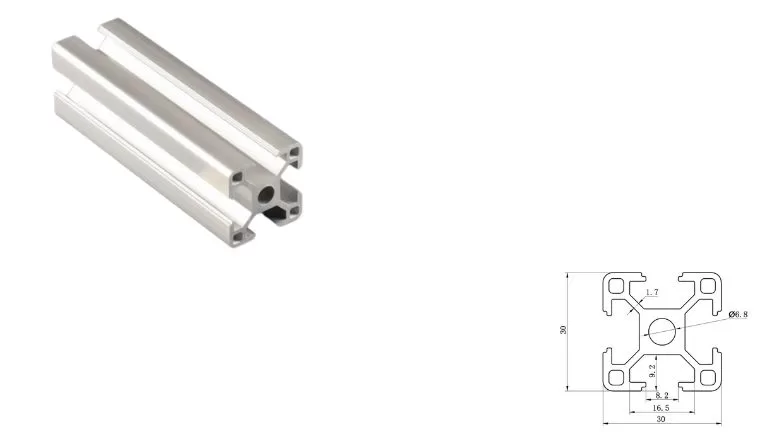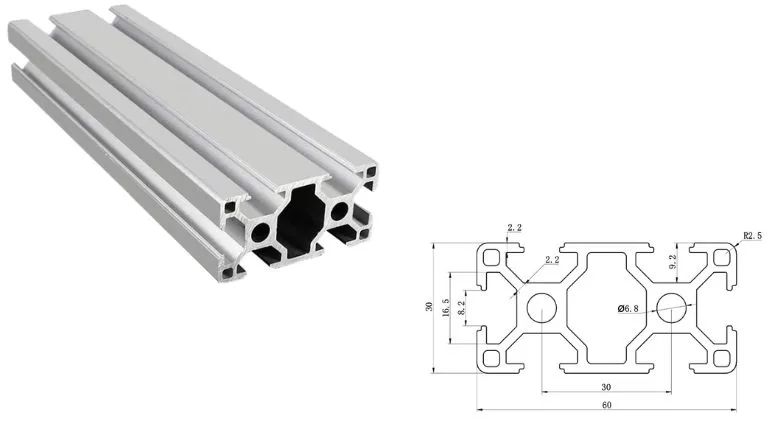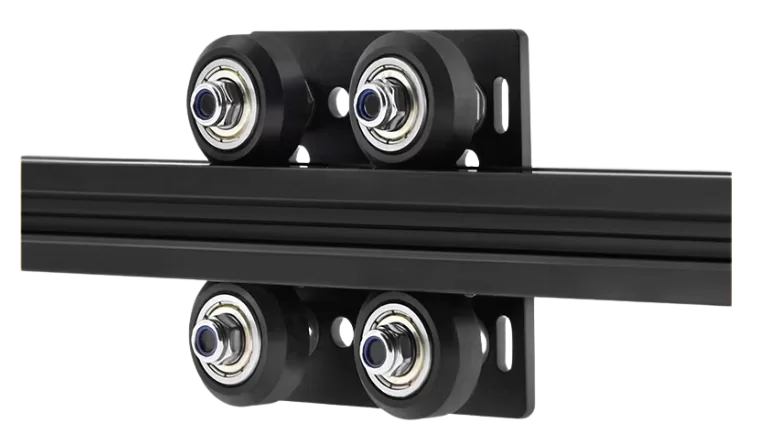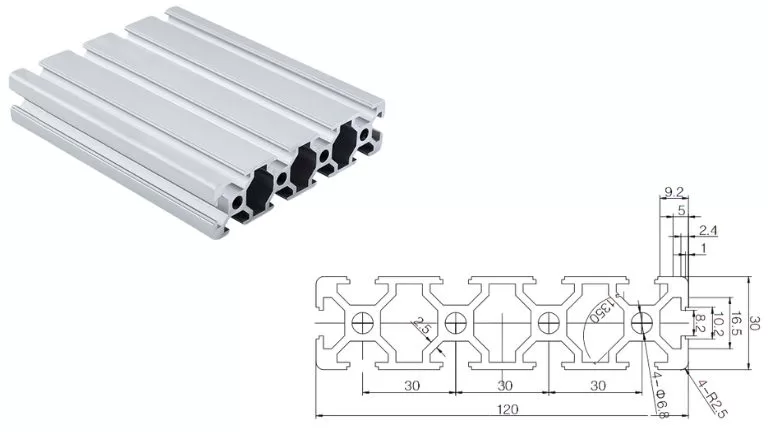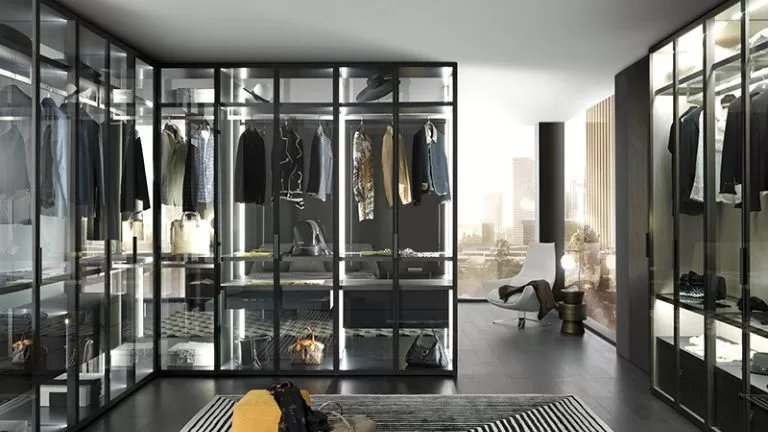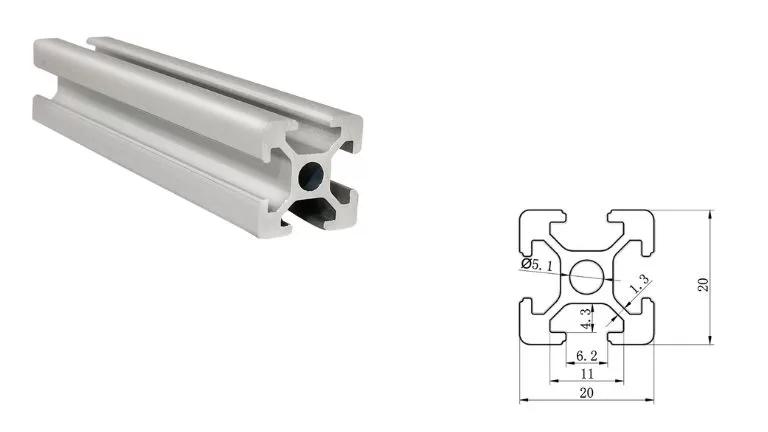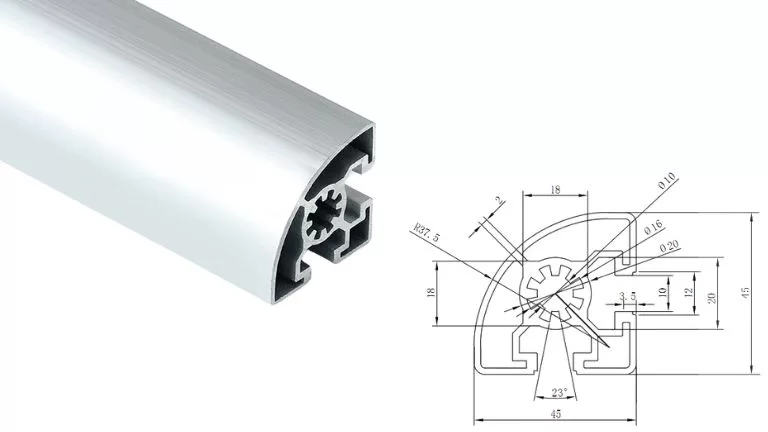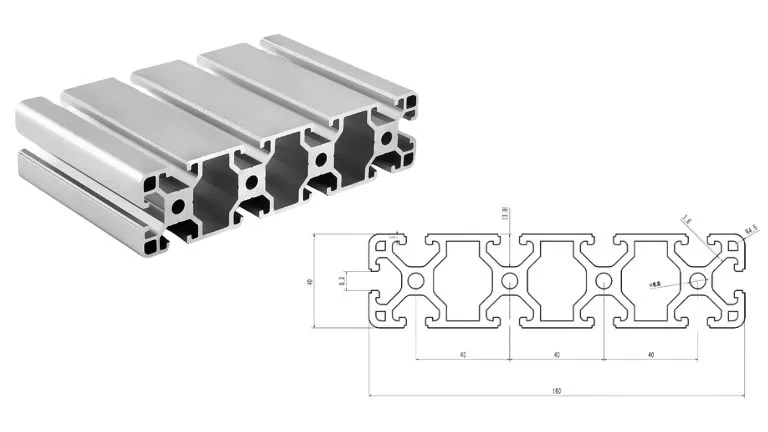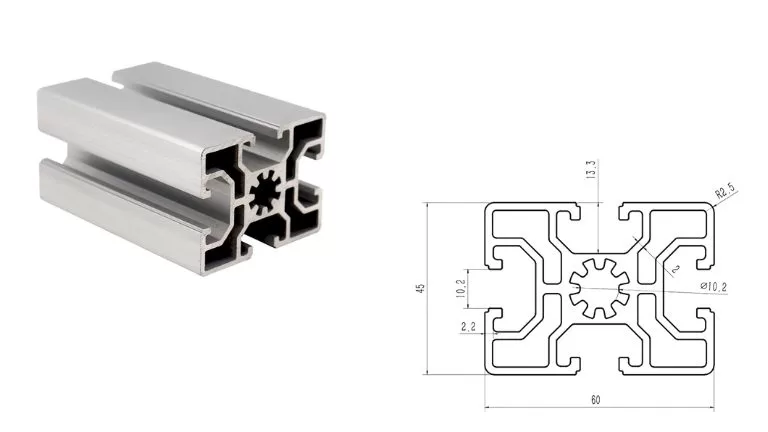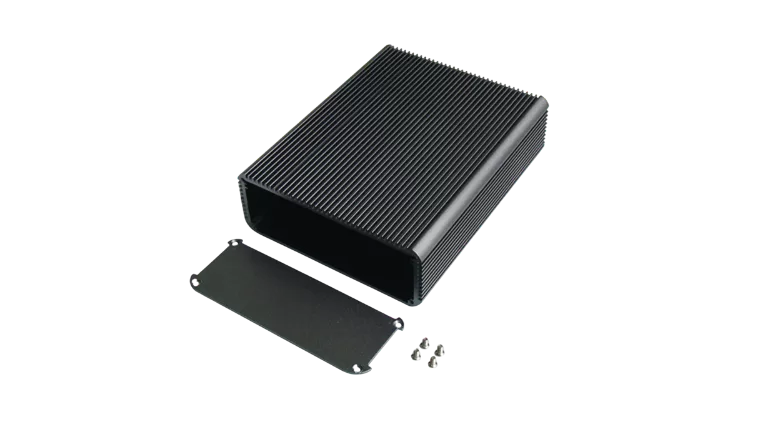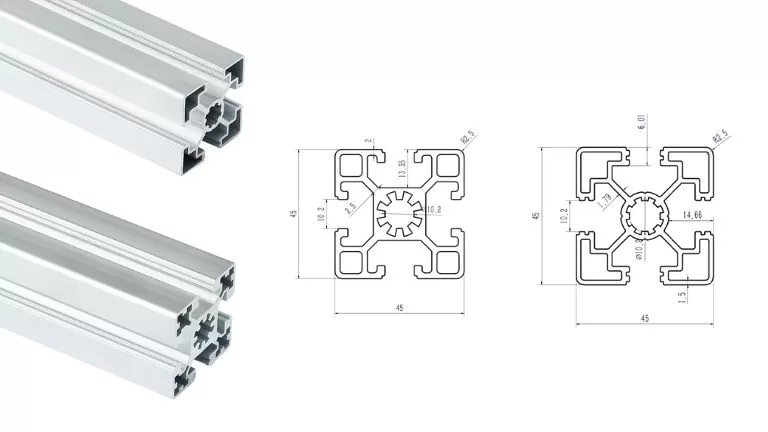Custom Precision Extruded Aluminum Telescoping Tubing | Pole Profile
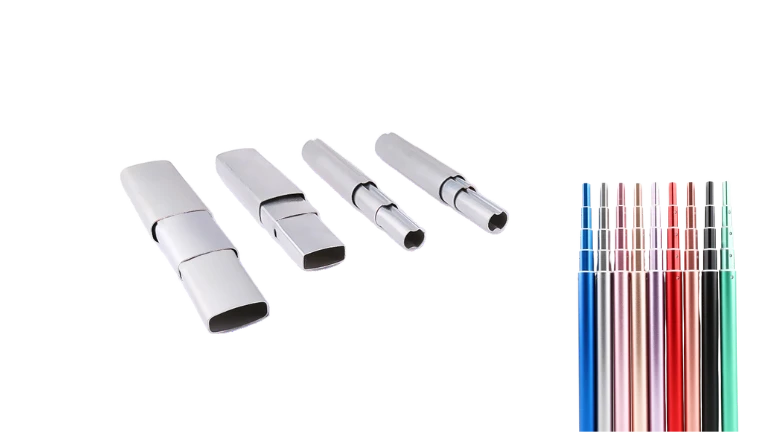
Extruded aluminum telescoping tubing, available in round, square, and oval shapes, meets diverse structural needs with customizable sizes for smooth nesting. Its versatility includes surface treatments like woodgrain finishes, offering aesthetic appeal while retaining aluminum’s strength and corrosion resistance. This adaptability makes it ideal for applications like telescopic poles, camera tripods, lighting stands, and decorative architectural elements, where adjustable, lightweight, and visually pleasing solutions are essential.
We at HTS-ALU, a custom aluminum profile extrusion factory based in China, offer a wide range of aluminum profiles with various surface treatments and machining services.
Round Extruded Aluminum Telescoping Pole
This round extruded aluminum telescoping tube is lightweight and corrosion-resistant, ideal for outdoor antennas, flagpoles, and portable camera equipment stands. Its smooth surface and structural design allow for seamless telescoping functionality.
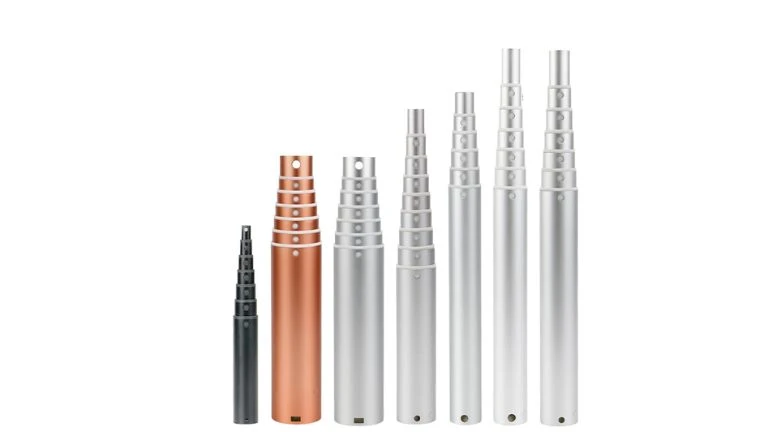
Telescoping Aluminum Square | Rectangular Tubing
Known for its stability and strength, the square shape facilitates precise alignment and structural integrity. It is ideal for projects requiring a firm and secure connection, supporting weight efficiently.
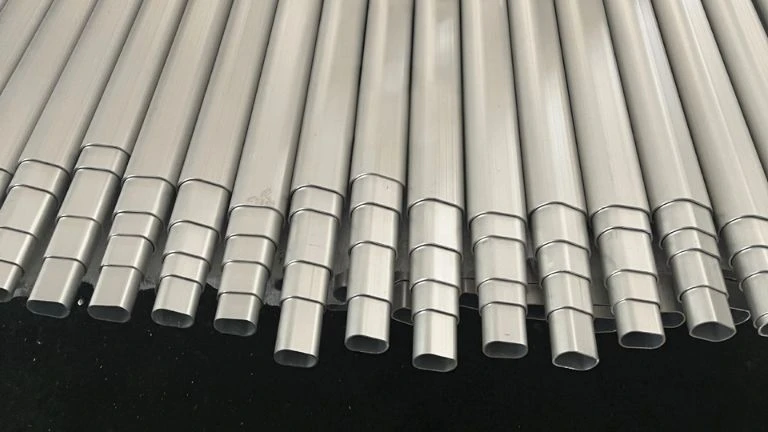
Custom-Shaped Extruded Aluminum Telescoping Tube
The custom-shaped extruded aluminum telescoping component is designed to meet specific application requirements with unique geometric shapes, offering specialized functional features. This component is widely used in aerospace, construction, and industrial design applications.
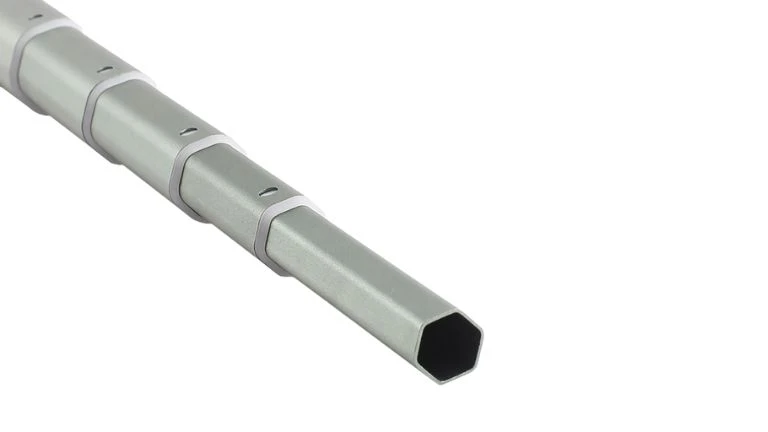
Machining of Extruded Aluminum Locking Telescoping Tubes
Extruded aluminum locking telescoping tubes can undergo precision machining to significantly enhance their functional capabilities for various applications. By drilling strategically placed holes, these tubes can achieve effective locking mechanisms that ensure secure and adjustable positioning. Additionally, milling slots into the tubes allows for the easy installation of additional accessories and components, tailored to meet specific requirements. This machining process enables locking telescoping tubes to be seamlessly integrated into complex assemblies, making them invaluable in industries such as construction, automotive, and aerospace, where adaptability and precision are paramount.

Surface Finishing for Extruded Aluminum Telescoping Tubes
Extruded aluminum telescoping tubes can undergo various surface treatments to improve durability and aesthetics. Non-exposed surfaces benefit from anodizing for corrosion resistance. Exposed areas can feature colorful anodizing for vibrant looks, electrophoretic coatings for smooth finishes, or wood grain effects to mimic natural wood, combining durability with visual appeal. These options make the tubes versatile for various applications.
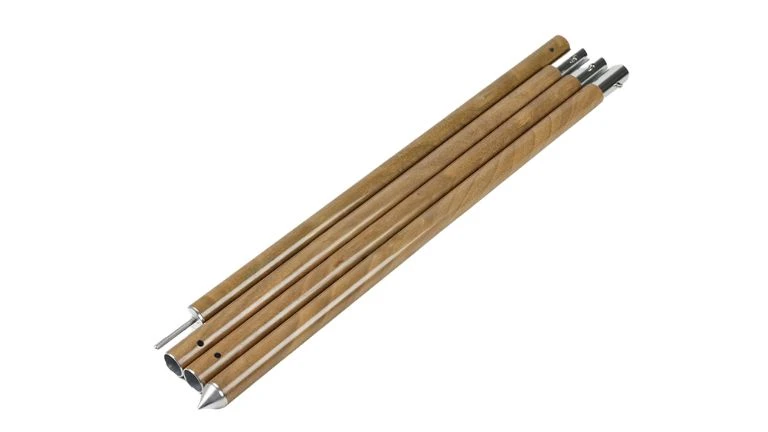
Advantages of Telescopic Aluminium Profile
Compared to other materials such as steel or plastic, aluminum extrusions offer a lightweight yet robust solution. Aluminum’s inherent properties, such as its high strength-to-weight ratio and natural corrosion resistance, make it an ideal choice for telescopic applications. Additionally, aluminum is easy to machine and can be customized with a variety of surface treatments to enhance its appearance and durability.
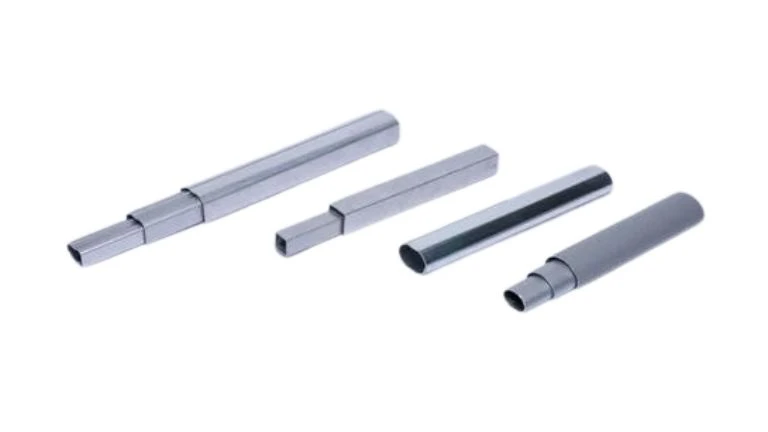
Applications of Telescopic Aluminum Profiles
Telescopic aluminum profiles are a marvel of engineering, offering both strength and flexibility across various industries. Their ability to extend and retract makes them invaluable in situations where adjustable length and compact storage are crucial. Below, we delve into the multifaceted applications of these profiles, highlighting specific products that benefit from their unique properties.

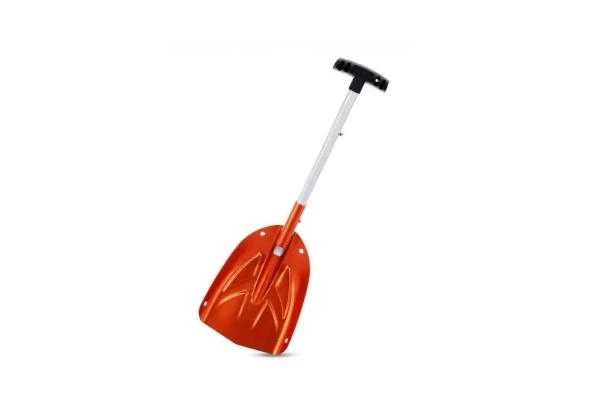
For Photography and Videography Equipment
In the world of media production, telescopic aluminum profiles are integral to the design of camera tripods and boom poles. They allow photographers and videographers to achieve the perfect height and angle, ensuring that their equipment remains stable and secure while capturing high-quality images and footage.
For Adjustable Furniture
The furniture industry has embraced the utility of telescopic profiles to create innovative and space-saving designs. Items such as adjustable table legs and TV stands utilize these profiles, providing consumers with the flexibility to modify furniture height and position with ease.


For Medical Devices
Telescopic aluminum profiles play a critical role in the healthcare sector. They are employed in the construction of IV stands, mobile medical carts, and other adjustable equipment that needs to be moved and adapted to the varying needs of patients and healthcare professionals.
For Automotive and Transportation
Within the automotive industry, telescopic profiles are used in the manufacturing of roof racks, cargo management systems, and adjustable seat structures. Their durability and ease of use make them perfect for applications that require frequent adjustments to accommodate different load sizes and shapes.


For Sporting Goods
Telescopic aluminum profiles have found their way into the sporting goods market, particularly in the construction of hiking poles, tent frames, and portable sports nets. Their lightweight and collapsible features make them a favorite among outdoor enthusiasts and athletes.
For Emergency Services
For emergency and rescue operations, telescopic profiles are used in the design of collapsible ladders, stretcher poles, and lighting equipment. These applications require quick deployment and retraction, which is effortlessly provided by the aluminum profiles.
For Architectural and Construction Tools
In construction, telescopic aluminum profiles are used to create extendable levels, measuring sticks, and scaffolding components. Their ability to adjust to different lengths makes them indispensable tools on any construction site.
leading manufacturer from China
Custom Extruded Aluminum Telescoping Tubes
Our aluminum extrusion factory, located in Nanchang, Jiangxi Province, covers an extensive area of 30,000 square meters and is home to a dedicated workforce of over 120 skilled individuals. We place a strong emphasis on environmental responsibility, ensuring that our production processes adhere to strict environmental standards. Additionally, we prioritize the well-being of our employees, providing a safe and nurturing work environment. Our commitment to sustainability and employee welfare sets us apart as a responsible and ethical manufacturer in the industry.
Advanced Extrusion Lines
Boasting over 30 high-precision extrusion production lines from Japan and Germany, we ensure unmatched quality and efficiency.
Custom Mold Design and Processing
We tailor-make molds based on client designs or samples, providing prototypes for confirmation to meet precise specifications.
Comprehensive Surface Treatment Techniques
Our surface treatment capabilities include anodizing, electroplating, sandblasting, powder coating, fluorocarbon painting, and wood grain transfer printing to enhance product durability and aesthetics.
Over Two Decades of Expertise
Since 2013, we have been manufacturing aluminum profiles, accumulating vast experience in producing a wide array of profiles for windows, doors, and various industrial applications.
Our Factory
HTS NEW MATERIALS stands as a premier aluminum extrusion profile manufacturer in China. Boasting more than 40 production lines and housing the largest 6000-ton extrusion press, we excel in delivering high-quality solutions. Our capabilities extend to mold design and processing, along with comprehensive surface treatment and advanced machining services.
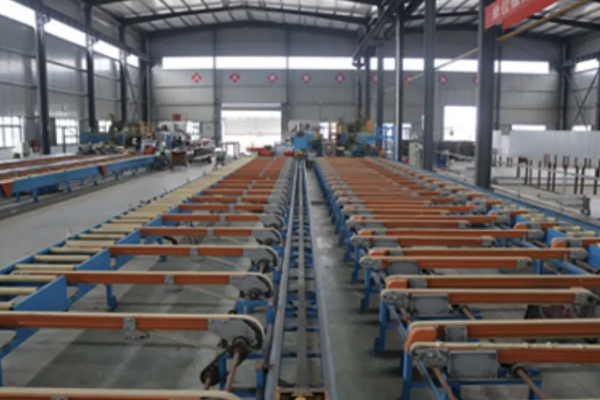
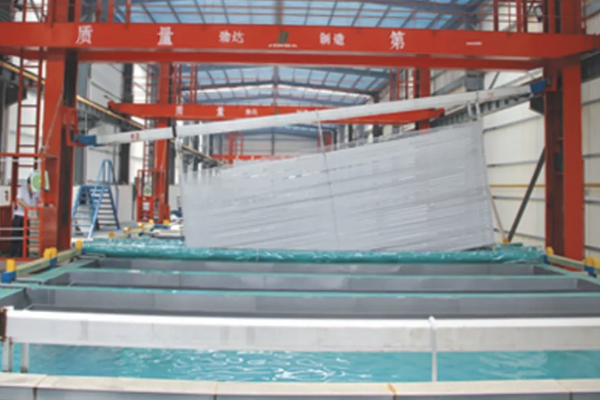
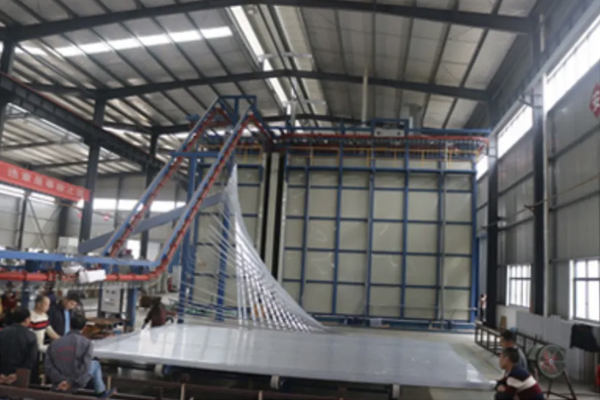
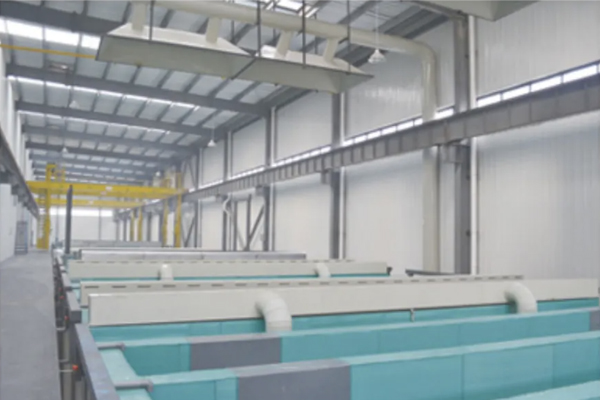
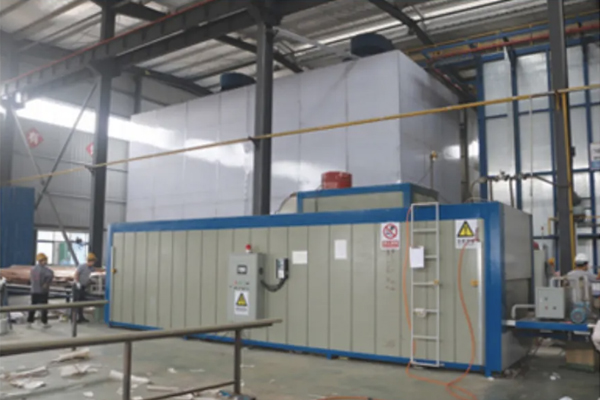
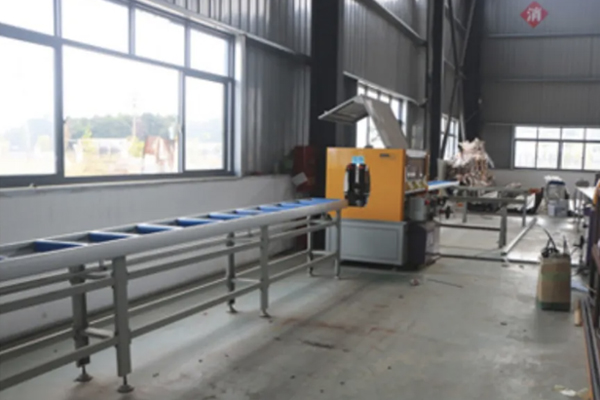
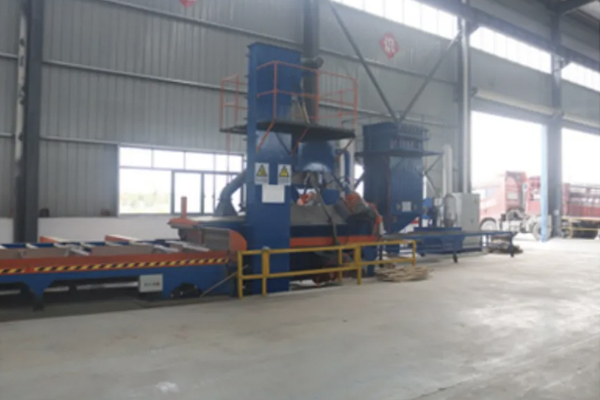
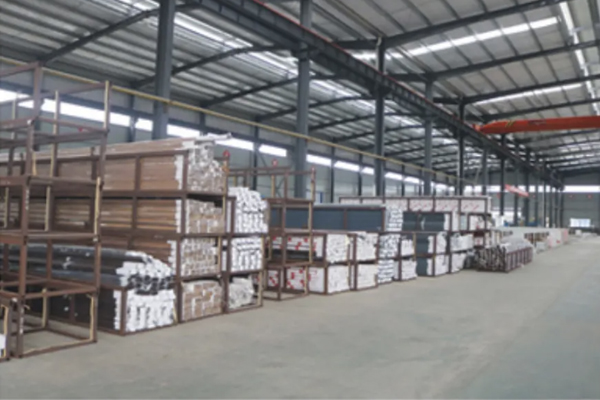
Aluminium Profile Solutions
At HTS Aluminium, we pride ourselves on our ability to deliver custom aluminium profile solutions tailored to the unique needs of each client. Our bespoke services are grounded in a deep understanding of our clients’ visions, which we bring to life by transforming drawings or samples into precision-engineered aluminium profiles.
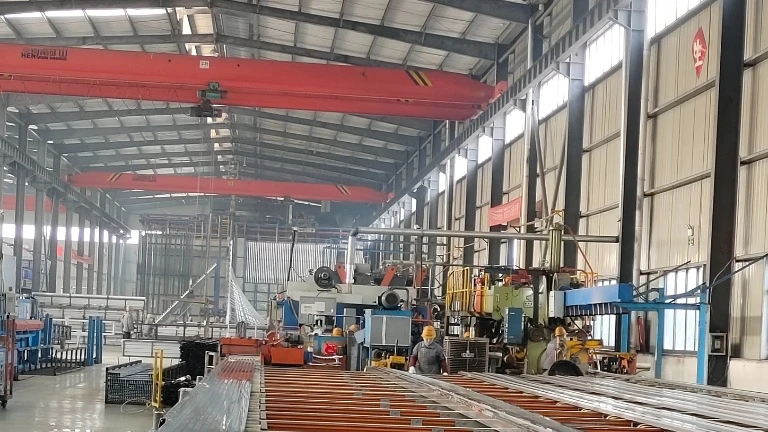
Precision Aluminum Extrusion Process
Our state-of-the-art manufacturing facility is equipped with advanced extrusion presses and precision cutting tools, allowing us to handle even the most complex profiles with exceptional accuracy. Our team of skilled technicians brings years of industry experience to the table, ensuring that every extruded aluminium profile meets the highest standards of quality and precision.
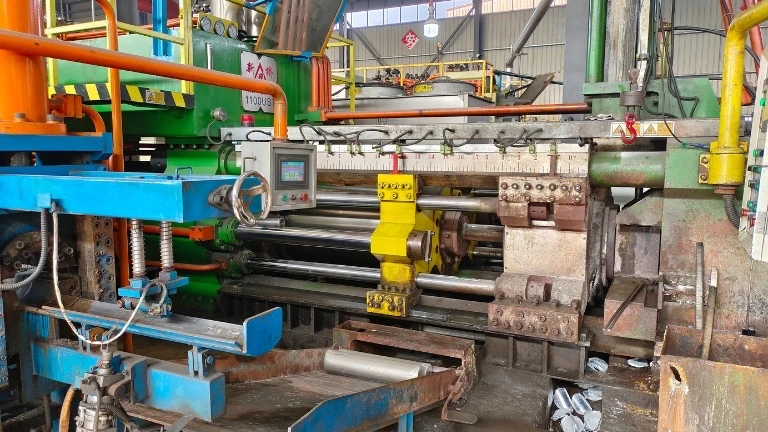
Design and Manufacture of Moulds
We at HTS Aluminium specialize in the design and manufacture of custom moulds based on client specifications. Once a mould is created, we conduct trial productions and send samples to our clients for confirmation. This meticulous process ensures that the final product perfectly aligns with our clients’ expectations.
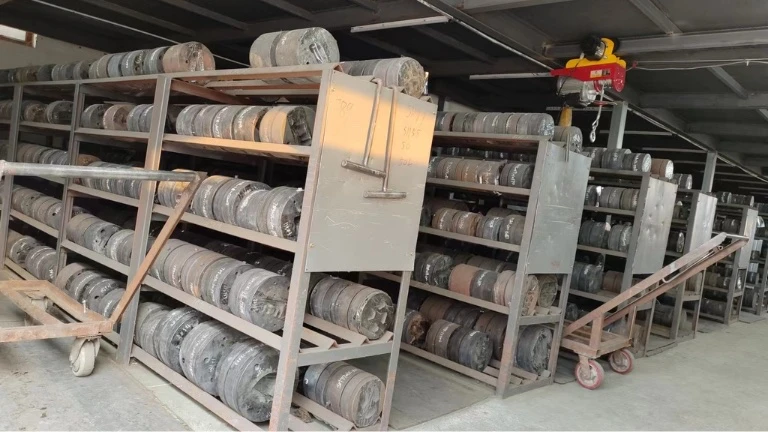
Material for Extruded Aluminum
Quality begins with the raw materials, and at HTS Aluminium, we use only the highest standard aluminium alloys for our extrusions. Our profiles are commonly crafted from a selection of industry-standard grades, each offering a balance of strength, durability, and corrosion resistance to meet various application requirements.
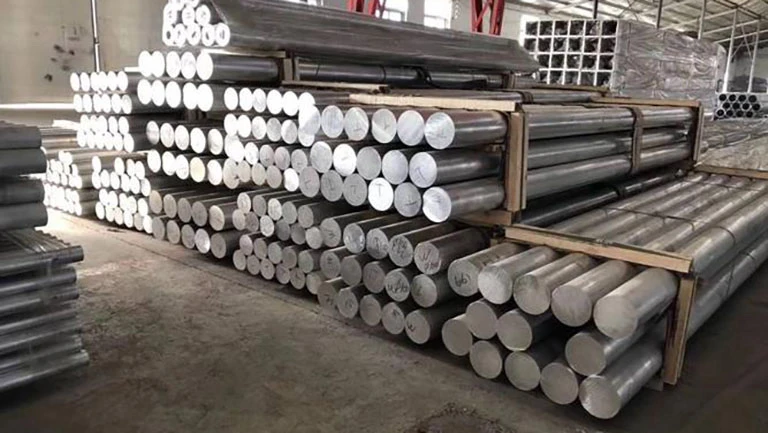

5052: Offers excellent corrosion resistance, good weldability, and moderate-to-high strength. It is a popular choice for marine and automotive applications.
Silicon (Si): 0.25% (Maximum)
Iron (Fe): 0.40% (Maximum)
Copper (Cu): 0.10% (Maximum)
Manganese (Mn): 0.10% (Maximum)
Magnesium (Mg): 2.2-2.8%
Chromium (Cr): 0.15-0.35%
Zinc (Zn): 0.10% (Maximum)
Remaining Balance: Aluminum (Al)
6061: A versatile alloy with good mechanical properties, weldability, and corrosion resistance. It is widely used for structural applications and in the automotive industry.
Silicon (Si): 0.40-0.80%
Iron (Fe): 0.70% (Maximum)
Copper (Cu): 0.15-0.40%
Manganese (Mn): 0.15% (Maximum)
Magnesium (Mg): 0.8-1.2%
Chromium (Cr): 0.04-0.35%
Zinc (Zn): 0.25% (Maximum)
Titanium (Ti): 0.15% (Maximum)
Remaining Balance: Aluminum (Al)
6063: Often referred to as an architectural alloy, it has a smooth surface finish and is commonly used in window and door frames.
Silicon (Si): 0.20-0.60%
Iron (Fe): 0.35% (Maximum)
Copper (Cu): 0.10% (Maximum)
Manganese (Mn): 0.10% (Maximum)
Magnesium (Mg): 0.45-0.90%
Chromium (Cr): 0.10% (Maximum)
Zinc (Zn): 0.10% (Maximum)
Titanium (Ti): 0.10% (Maximum)
Remaining Balance: Aluminum (Al)
7075: One of the strongest aluminum alloys available, with zinc as the main alloying element. It is used in applications where strength is critical, such as in aerospace and military components.
Zinc (Zn): 5.1-6.1%
Magnesium (Mg): 2.1-2.9%
Copper (Cu): 1.2-2.0%
Chromium (Cr): 0.18-0.28%
Silicon (Si): 0.40% (Maximum)
Iron (Fe): 0.50% (Maximum)
Manganese (Mn): 0.30% (Maximum)
Titanium (Ti): 0.20% (Maximum)
Other elements: Each 0.05% (Maximum), Total 0.15% (Maximum)
Remaining Balance: Aluminum (Al)
Heat Treatment Options
Our aluminium profiles can undergo a range of heat treatment options to enhance their properties. From T5 to T6 treatments, we tailor the process to achieve the desired level of hardness, strength, and elasticity. Each treatment option is designed to bring out the best in the material, ensuring that the final product stands up to the demands of its application.
T5 Heat Treatment
Process: Cooled from an elevated temperature shaping process and then artificially aged.
Characteristics: Increases the strength of the aluminum by accelerating the aging process, resulting in a material that has moderate strength and good formability.
T6 Heat Treatment
Process: Solution heat-treated and then artificially aged.
Characteristics: Provides a significant increase in strength compared to T5 by altering the microstructure of the aluminum. This results in a high-strength material with good machinability and fair formability.
Machine Process after Extrusion
At our factory, we offer a wide range of machining services to enhance the functionality of our aluminum profiles. Our capabilities include precision cutting for exact lengths, punching and threading for modifications, and slotting for component compatibility. We also specialize in bending and welding for complex assemblies and robust structures. Additionally, our assembly services ensure complete, ready-to-use components.
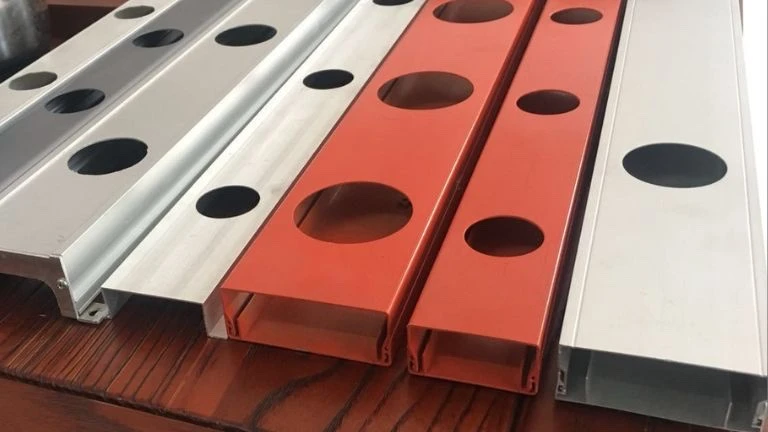

Punching
Punching, involves applying high force to create holes, indentations, or other shapes in aluminum profiles. This process is essential for creating ventilation openings, mounting slots, or lightweight structures with uniform patterns.
Drilling
Drilling creates necessary holes in aluminum profiles, allowing for the attachment of components with bolts or other fasteners, crucial for modular constructions.
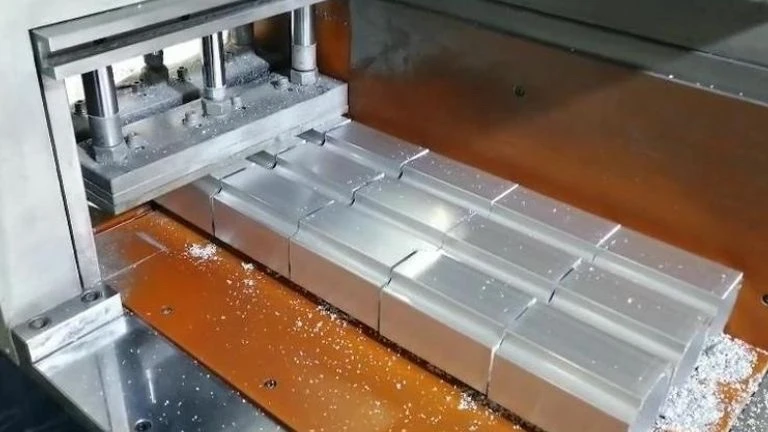
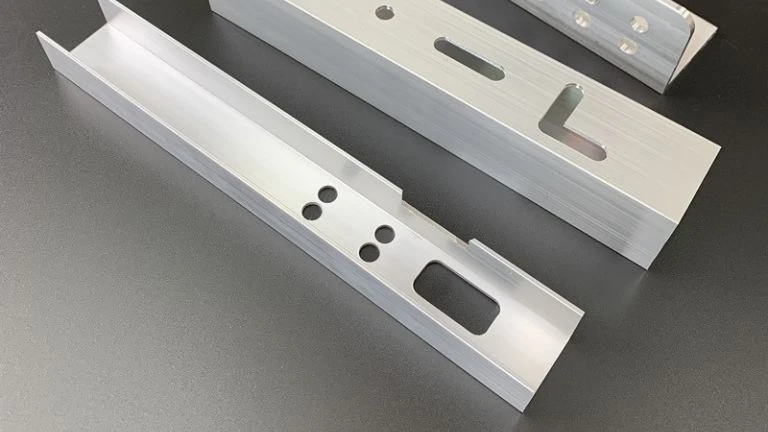
Cutting
Precision cutting is crucial to ensure that each aluminum profile is trimmed to exact length specifications, facilitating a perfect fit in final assembly.
Milling
Milling involves the removal of aluminum material using rotary cutters to achieve desired shapes and surfaces. This process is perfect for creating slots, grooves, and complex contours, enhancing the functionality and precision of aluminum profiles.
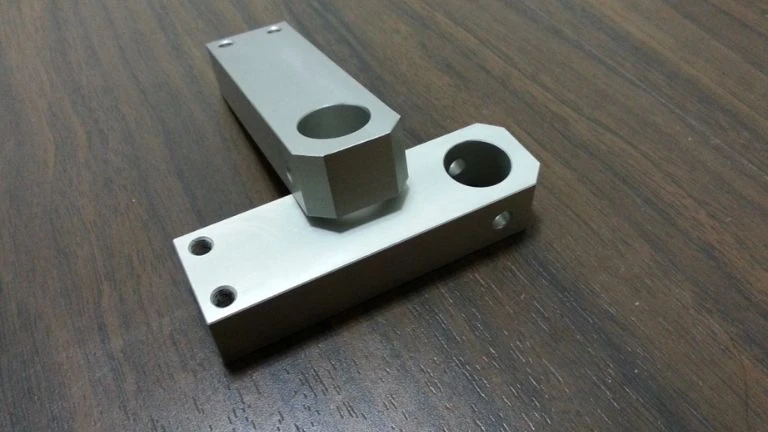
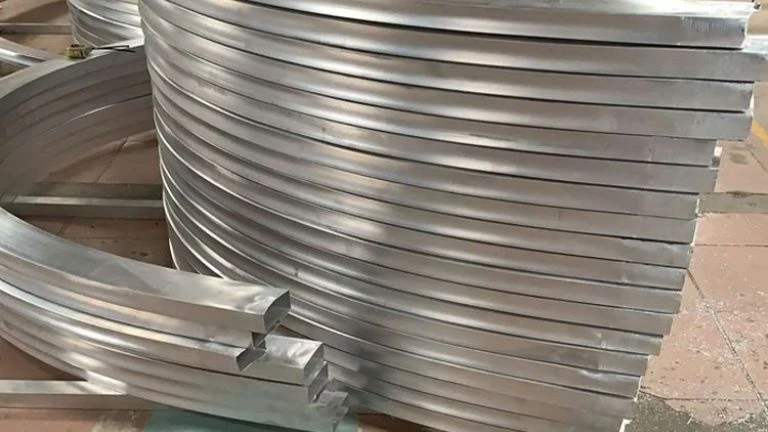
Tapping
Tapping adds threads to the drilled holes in aluminum profiles, enabling the secure fastening of bolts and screws, which is vital for assembly and maintenance.
This technique shapes aluminum profiles into desired curves or angles, maintaining material integrity and is essential for both architectural and functional structures.
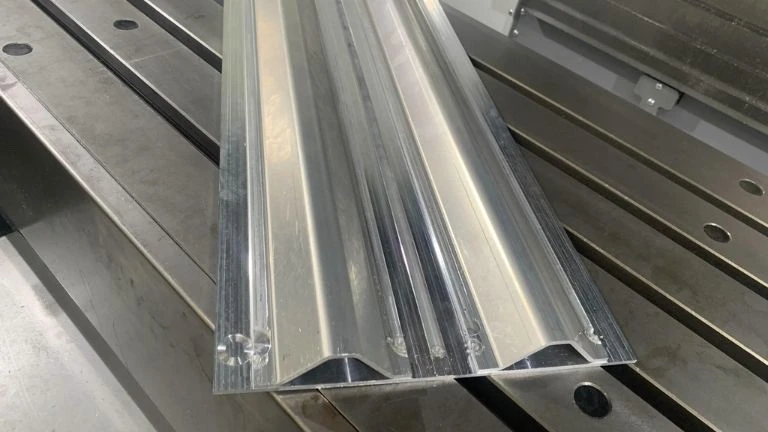
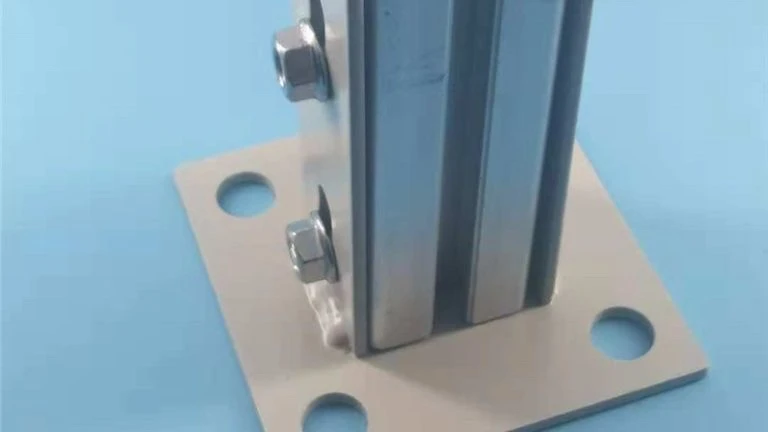
Welding
Welding joins multiple aluminum sections into a solid unit, providing a durable bond essential for structural applications.
Assembly
Our assembly services involve the strategic joining of various components using bolts and other fasteners to create complex assemblies, ensuring functionality and structural integrity.
Aluminum Profile Surface Treatment
To ensure the longevity and aesthetic appeal of our telescopic aluminum profiles, we offer a range of surface treatments including:
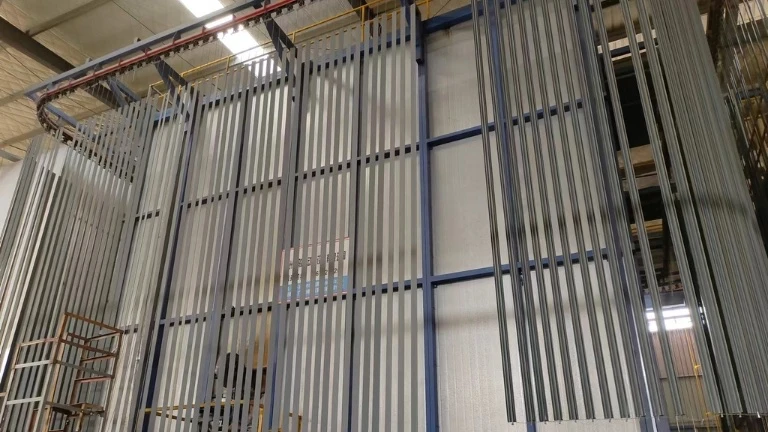
Anodizing: The Protective Shield
What is Anodizing? Anodizing is an electrochemical process that thickens and toughens the naturally occurring protective oxide on the surface of aluminum profiles. This treatment enhances corrosion resistance and wear resistance, making the aluminum surface harder and more durable.
Key Advantages
Improved corrosion resistance
Enhanced surface hardness
Aesthetic appeal with a variety of color options
Better adhesion for paints and primers
Increased thermal insulation properties
Electroplating: The Metal Finish
What is Electroplating? Electroplating involves the deposition of a metal coating on the extruded aluminum profile. This process can be used to improve corrosion resistance, increase surface hardness, and add a decorative finish.
Key Advantages
Enhanced corrosion resistance
Decorative finishes with various metal types
Increased surface hardness
Improved wear resistance
Sandblasting: The Texture Artist
What is Sandblasting? Sandblasting is a mechanical process where abrasive materials are blasted onto the aluminum surface at high velocity to clean or modify its texture. This is often used to prepare the surface for further treatments or to achieve a specific aesthetic look.
Key Advantages
Uniform surface finish
Improved surface cleanliness
Enhanced paint and coating adhesion
Aesthetic texture options
Powder Coating: The Colorful Protector
What is Powder Coating? Powder coating is a dry finishing process where a powder material is electrostatically applied to the aluminum surface and then cured under heat to form a skin-like coating. This method provides a durable, uniform, and attractive finish.
Key Advantages
Wide range of color options
Uniform, durable finish
Excellent resistance to chipping, scratching, and corrosion
Eco-friendly process with minimal VOC emissions
Fluorocarbon Painting: The Weather Warrior
What is Fluorocarbon Painting? Fluorocarbon painting involves applying a fluorocarbon resin-based paint to the aluminum profile, which offers exceptional weather resistance, making it ideal for outdoor applications.
Key Advantages
Outstanding weather resistance
Excellent color and gloss retention
Resistance to UV radiation and corrosion
Suitable for extreme environmental conditions
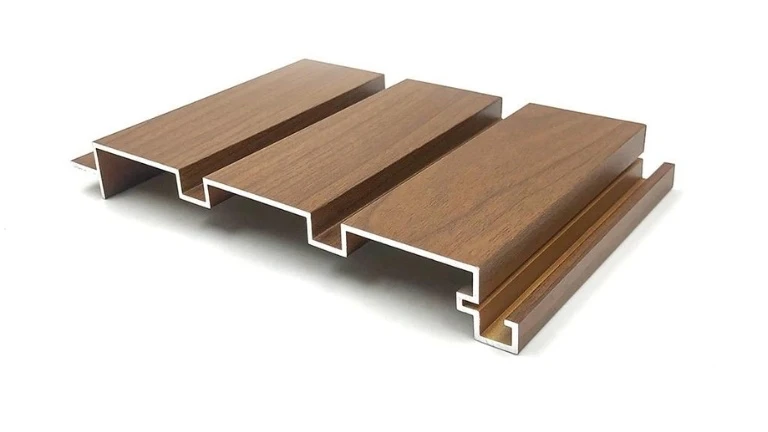
Wood Grain Transfer: The Natural Look
What is Wood Grain Transfer? Wood grain transfer is a process where a wood grain pattern is applied to the aluminum profile through heat transfer. This provides the natural appearance of wood while maintaining the benefits of aluminum.
Key Advantages
Aesthetic appeal of natural wood
Durable and maintenance-free
Resistance to corrosion and weathering
Ideal for architectural applications where wood-like finish is desired
Custom Aluminum Extrusion Process
At HTS Aluminum Profiles, we specialize in delivering custom aluminum extrusion solutions tailored to your specific needs. Here’s a step-by-step guide to our customization process:
Step 1: Initial Consultation
Your journey begins with an initial consultation where we discuss your project requirements. We encourage you to share your design concepts, application needs, and any critical parameters that the aluminum profile must meet. This collaborative approach ensures that we fully understand your vision and objectives.
Step 2: Design and Engineering
Leveraging our extensive experience in aluminum extrusion, our skilled engineers work closely with you to refine your design. We consider factors such as the aluminum alloy grade, temper, and mechanical properties required for your application. Our team uses advanced CAD software to create precise technical drawings and 3D models of the proposed profile.
Step 3: Die Fabrication
Once the design is finalized, we proceed to manufacture the custom extrusion dies. Our precision die-making process ensures that the final profile will match your specifications with high accuracy. We employ state-of-the-art CNC machines to craft dies that can withstand the rigors of extrusion while maintaining tight tolerances.
Step 4: Aluminum Extrusion
With the dies ready, the actual extrusion process begins. We select the appropriate aluminum alloy and heat it to the precise extrusion temperature. The heated billet is then pressed through the die to create the custom profile. Our extrusion presses, ranging from 600 to 3600 tons, are capable of producing a wide range of profile sizes and shapes.
Step 5: Surface Treatment and Finishing
Following extrusion, the profiles undergo various surface treatments as per your requirements. Options include anodizing, electroplating, sandblasting, powder coating, fluorocarbon painting, and wood grain transfer printing. These processes enhance the profiles’ durability, corrosion resistance, and aesthetic appeal.
Step 6: Quality Assurance
Quality is at the heart of everything we do. Each custom aluminum profile is subjected to rigorous quality checks to ensure it meets ISO standards and our European quality certifications. We perform dimensional inspections, mechanical testing, and surface finish evaluations to guarantee that your profiles are delivered without defects.
Step 7: Packing and Delivery
After passing all quality inspections, the aluminum profiles are carefully packed to prevent any damage during transit. We use robust packaging materials and methods tailored to the profiles’ dimensions and your delivery preferences. Our logistics team then manages the safe and timely delivery of your custom aluminum profiles to your specified location.
Step 8: After-Sales Support
Our commitment to your satisfaction extends beyond delivery. We offer comprehensive after-sales support to address any concerns or additional requirements you may have. Our customer service team is always ready to assist you with any questions or feedback.
Partner with Us
We are committed to delivering precision-engineered aluminum profiles that meet the highest standards of quality. From initial design to final delivery, we provide a seamless and personalized experience, ensuring that your custom aluminum solutions are produced efficiently and to your satisfaction.
Take the next step in your project and contact us for a consultation on your custom aluminum extrusion needs.
